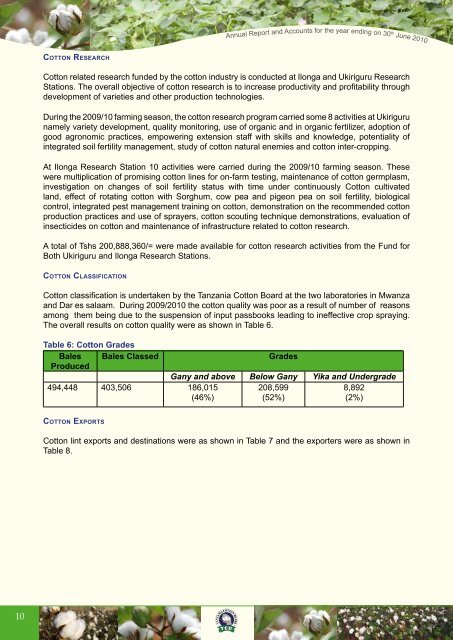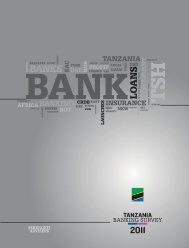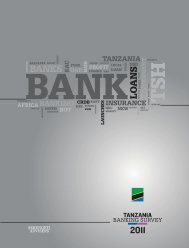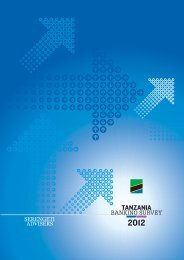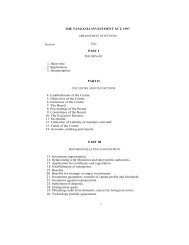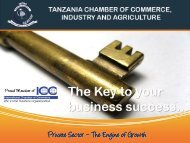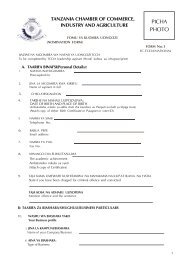Tanzania Cotton Board Annual Report And Accounts
Tanzania Cotton Board Annual Report And Accounts
Tanzania Cotton Board Annual Report And Accounts
You also want an ePaper? Increase the reach of your titles
YUMPU automatically turns print PDFs into web optimized ePapers that Google loves.
<strong>Annual</strong> <strong>Report</strong> and <strong>Accounts</strong> for the year ending on 30 th June 2010<strong>Cotton</strong> Research<strong>Cotton</strong> related research funded by the cotton industry is conducted at Ilonga and Ukiriguru ResearchStations. The overall objective of cotton research is to increase productivity and profitability throughdevelopment of varieties and other production technologies.During the 2009/10 farming season, the cotton research program carried some 8 activities at Ukirigurunamely variety development, quality monitoring, use of organic and in organic fertilizer, adoption ofgood agronomic practices, empowering extension staff with skills and knowledge, potentiality ofintegrated soil fertility management, study of cotton natural enemies and cotton inter-cropping.At Ilonga Research Station 10 activities were carried during the 2009/10 farming season. Thesewere multiplication of promising cotton lines for on-farm testing, maintenance of cotton germplasm,investigation on changes of soil fertility status with time under continuously <strong>Cotton</strong> cultivatedland, effect of rotating cotton with Sorghum, cow pea and pigeon pea on soil fertility, biologicalcontrol, integrated pest management training on cotton, demonstration on the recommended cottonproduction practices and use of sprayers, cotton scouting technique demonstrations, evaluation ofinsecticides on cotton and maintenance of infrastructure related to cotton research.A total of Tshs 200,888,360/= were made available for cotton research activities from the Fund forBoth Ukiriguru and Ilonga Research Stations.<strong>Cotton</strong> Classification<strong>Cotton</strong> classification is undertaken by the <strong>Tanzania</strong> <strong>Cotton</strong> <strong>Board</strong> at the two laboratories in Mwanzaand Dar es salaam. During 2009/2010 the cotton quality was poor as a result of number of reasonsamong them being due to the suspension of input passbooks leading to ineffective crop spraying.The overall results on cotton quality were as shown in Table 6.Table 6: <strong>Cotton</strong> GradesBales Bales ClassedProduced494,448 403,506 186,015(46%)GradesGany and above Below Gany Yika and Undergrade208,5998,892(52%)(2%)<strong>Cotton</strong> Exports<strong>Cotton</strong> lint exports and destinations were as shown in Table 7 and the exporters were as shown inTable 8.10


